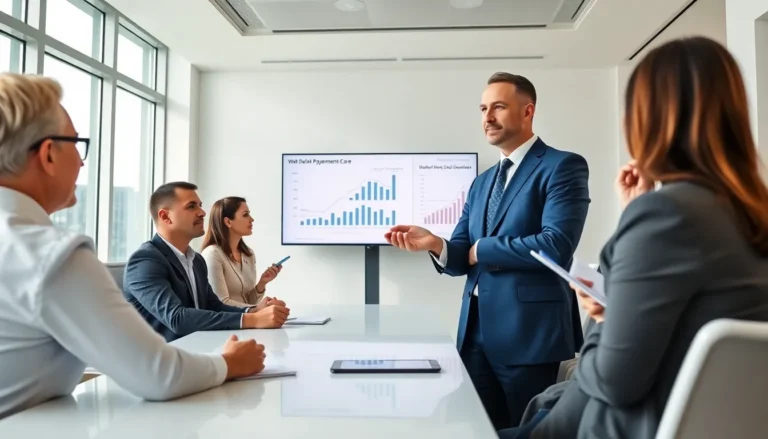Table of Contents
ToggleEver found yourself wondering whether the economy will eventually turn around, or is it destined for a perpetual nosedive? It’s a question that keeps many up at night, pondering the fate of their investments and livelihoods. Understanding the ebb and flow of economic cycles might just save you some sleepless nights. Let’s untangle that mystery with humor and a sprinkle of solid strategy, because who doesn’t like to be both informed and entertained?
Understanding Economic Cycles

Economic cycles are the natural ups and downs that economies experience over time. Think of it as a roller coaster ride: there are thrilling highs and gut-wrenching lows, creating fluctuations that affect everything from job availability to the stock market. These cycles typically consist of four phases: expansion, peak, contraction, and trough. During expansion, businesses thrive, and unemployment dips, while peaks signal the economy at its prime. Conversely, contraction leads to recessions and troughs represent rock bottom. So, will the economy recover? History shows that it usually does, but understanding these cycles helps manage expectations.
The timing of these phases is vital. Economists might not have a crystal ball, but they use indicators like GDP growth, employment rates, and consumer spending to forecast these cycles. Each phase presents both challenges and opportunities, and being aware of them allows individuals and businesses to prepare and adapt.
The Current State of the Economy
As of now, the global economy feels like a giant game of Jenga. With ongoing geopolitical tensions, supply chain disruptions, and inflation climbing higher than a cat on a hot tin roof, it’s safe to say things aren’t quite stable. Unemployment rates may not be catastrophic, but many people are still feeling the pinch at the grocery store and the gas pump.
The stock market is another beast entirely: one minute it’s celebrating a great earnings report, and the next it’s tumbling down after an unexpected Federal Reserve announcement. Consumer confidence is a fickle friend, with surveys often reflecting a public unsure of what to expect next. So, can the economy bounce back from this turmoil? It’s a question worth exploring.
Factors Influencing Economic Improvement
Government Policies and Economic Recovery
When it comes to economic recovery, government policies play a crucial role. Think of them as the steering wheel of the economy. Stimulus packages, tax cuts, and investments in infrastructure can energize a local economy. But, poor policy decisions can just as easily sink that ship. For example, when a government focuses on promoting small business growth, they provide jobs and fuel innovation, eventually leading to economic improvement.
Global Influences on Local Economies
On a global scale, interdependence is the name of the game. One country’s economic health can directly impact another’s. For instance, if a major trading partner experiences a downturn, local economies may feel the repercussions through decreased exports and weakened supply chains. Keeping an eye on international markets and trade agreements is crucial: after all, no economy stands alone in this interconnected world.
Innovation and Technology’s Role in Recovery
Public Sentiment and Economic Confidence
Incorporating innovation and technology can significantly enhance economic recovery efforts. Think about it, automation, artificial intelligence, and green technologies are changing not just businesses, but entire industries. By embracing innovation, economies can boost productivity and create new job opportunities.
Public sentiment also affects economic recovery. When consumers are optimistic about their financial situation, they are more likely to spend. People might splurge on that fancy new gadget, which, in turn, contributes to local business revenue. Conversely, negativity can lead to decreased spending, so slowing recovery. Keeping a pulse on public sentiment can provide insights into potential shifts in economic trends.
Historical Perspectives: Booms and Busts
Future Predictions and Economic Indicators
Looking back at economic history reveals a pattern of booms and busts. After each major downturn, like the Great Depression or the 2008 financial crisis, came a recovery phase. Markets rebounded, jobs were created, and economies regained their footing. While no two recoveries are identical, examining historical trends can provide a framework for predicting future changes.
Key economic indicators help shed light on potential improvements. Watching trends in retail sales, manufacturing output, and housing markets can offer critical clues about where the economy is headed. It’s a puzzle, but each piece can lead to a clearer picture.








